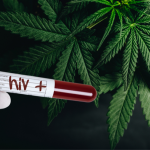Illuminating Pain Management
The Benefits of Acupuncture and Low-Level Laser Therapy
SHAWN M. CARNEY, ND
Naturopathic physicians are often sought out by patients frustrated with the superficial quality of care they receive from some conventional medical doctors; those seeking pain relief are no exception. Perhaps even more discouraging to patients are the well-known side effects to pain management treatments. These may include gastrointestinal bleeding,1 hepatotoxicity,2 immunosuppression,3 osteoporosis,3 and even addiction,4 depending on the type of pain being treated and type of medication used. Steroids, for example, have so many side effects that since the COVID-19 pandemic, their use in procedures such as epidural and intraarticular injections has come with an elevated level of concern; recommendations have been made to manage pain with either local anesthetic alone or the lowest dose of steroids possible, resulting in the term “steroid distancing.”5 As naturopathic physicians, we are able to offer physical medicine management options that don’t have these common undesirable side effects and move a person closer to healing, instead of just suppressing inflammation. And since new research published this year found that early prolonged treatment for acute pain with steroids or nonsteroidal anti-inflammatory drugs has a higher risk of transitioning into persistent chronic pain, patients deserve to know about the safe, reliable, and wholistic options available to them from naturopathic doctors.6
Types of Pain
Clinically, pain conditions are often described as either nociceptive or non-nociceptive and as either acute or chronic.7 Nociceptive pain is caused from normal tissue injury and can be either somatic or visceral in origin. In contrast, non-nociceptive pain is often considered either psychogenic or neuropathic; this latter classification itself can be further subdivided into peripheral or central neuropathy. Referred pain is often of visceral origin, and the non-visceral region experiencing the pain is supplied by the same spinal segment that affects the visceral region. This allows impulses from many cutaneous and visceral neurons to converge. Of course, any of these subcategories can be additionally considered acute or chronic as mentioned above. Each of these factors require professionals to consider not just how appropriate a treatment might be for each patient, but also how its side effects might potentially cause harm.
Acupuncture
Acupuncture has been well established as an effective analgesic treatment, and evidence showing applications for acute as well as chronic conditions has been substantial. For example, in 2002, the World Health Organization Consultation on Acupuncture completed a review of over 200 clinical trials and deemed acupuncture effective for 28 diseases and beneficial for 63 others, including many pain-related issues.8 Acute pain conditions that benefit from acupuncture include post-operative pain, acute back pain, labor pain, primary dysmenorrhea, tension-type headaches, and migraines.9 With regard to chronic pain,
acupuncture has provided relief for low back pain (LBP), knee osteoarthritis, headaches, shoulder pain, and neck pain.9
Studies on the mechanisms of action for acupuncture have revealed that endogenous opioid peptides in the central nervous system (CNS) play a key role in mediating the analgesic effect of acupuncture. Acupuncture has also been shown not only to increase desired signal markers but also to decrease overexpression of the pain peptide substance P in the dorsal horn of the spinal cord.10,11 Other acupuncture-induced analgesic effects in the CNS include the release of serotonin, norepinephrine, orexin, and endocannabinoids; however, it also reduces cyclooxygenase-2 and prostaglandin E2 peripherally, stimulating opioid release peripherally as well.9 Interestingly, electroacupuncture, which relies on the application of electrical current to acupuncture needles, can enable various neuropeptides to be released, depending on the frequency of electricity applied.12
Low Level Laser Therapy
A much more recent analgesic treatment, low level laser therapy (LLLT) has been used clinically for over fifty years. Regarding light therapy, both light absorption and scattering in tissue are wavelength-dependent, and tissue containing melanin has exponentially high absorption bands at wavelengths shorter than 600 nm.13 Thus, the preferred treatment for use in animals and patients almost exclusively involves red and near-infrared light (600-1070 nm).
LLLT, also called cold laser therapy, is a type of photobiostimulation that utilizes these wavelengths. It acts on mitochondria to increase ATP production, modulate reactive oxygen species, and induce transcription factors. Such factors include nuclear factor kappa B (NF-kB), which can increase transcription of many gene products associated with known beneficial effects of LLLT.14 Chen et al indicate that “anti-apoptotic and prosurvival proteins, [and] proteins involved in cellular proliferation and migration and increased collagen synthesis and myofibroblast differentiation respond to NF-kB activation.”14 The net effect of LLLT is protein synthesis, which modulates the levels of cytokines, growth factors, and inflammatory mediators and increases tissue oxygenation.11
LLLT deserves to be considered by practitioners interested in pain management. It has received Food and Drug Administration (FDA) approval for the treatment of acute and chronic muscle and joint pain of the neck, back and shoulder.15 Even a recent study found that use of LLLT over acupoints significantly reduced postoperative pain and the need for morphine.12 Regarding safety, Hashmi et al found that “LLLT has no reported adverse effects, and no reports of adverse events can be directly attributed to laser or light therapy.”16 Some studies, however, indicate that LLLT has the ability to potentiate tumor cells, as they could respond to many of the stimulatory effects as well as other tissues do.17,18 Therefore, practitioners offering LLLT as a patient treatment modality should consider the presence of tumors a probable contraindication.
Final Thoughts
An intriguing study by Parisien et al published earlier this year explored the role of immunology in LBP management. Specifically, it addressed the differences between those who dealt with chronic back pain and those whose back pain resolved after an acute episode.6 Their findings revealed that neutrophil activation-dependent inflammatory genes were upregulated in subjects with resolved pain, whereas no changes were observed in patients with persistent pain. These findings were then replicated among people with temporomandibular disorders. Furthermore, among rodents, dexamethasone treatments were ultimately shown to prolong pain duration, and this effect was abolished by neutrophil administration. Lastly, they reviewed clinical data and showed that the use of anti-inflammatory drugs was associated with increased risk of persistent pain, suggesting that anti-inflammatory treatments might have negative effects on pain duration.
If these findings hold up in clinical trials, they could revolutionize the mainstream approach to acute pain, moving from a focus on suppression to one of more comprehensive healing. As naturopathic doctors, we are particularly well suited to address pain management from this more wholistic standpoint, and patients in need should be aware of what we can offer.
[REFS]1. Huang ES, Strate LL, Ho WW, et al. Long-term use of aspirin and the risk of gastrointestinal bleeding. Am J Med. 2011;124(5):426-433.
2. Bessone F. Non-steroidal anti-inflammatory drugs: What is the actual risk of liver damage? World J Gastroenterol. 2010;16(45):5651-5661.
3. Coutinho AE, Chapman KE. The anti-inflammatory and immunosuppressive effects of glucocorticoids, recent developments and mechanistic insights. Mol Cell Endocrinol. 2011;335(1):2-13.
4. Klimas J, Gorfinkel L, Fairbairn N, et al. Strategies to Identify Patient Risks of Prescription Opioid Addiction When Initiating Opioids for Pain: A Systematic Review. JAMA Netw Open. 2019;2(5):e193365.
5. Manchikanti L, Kosanovic R, Vanaparthy R, et al. Steroid Distancing in Interventional Pain Management During COVID-19 and Beyond: Safe, Effective and Practical Approach. Pain Physician. 2020;23(4S):S319-S350.
6. Parisien M, Lima LV, Dagostino C, et al. Acute inflammatory response via neutrophil activation protects against the development of chronic pain. Sci Transl Med. 2022;14(644):eabj9954.
7. McCance K, Huether SE. Pathophysiology: The Biologic Basis for Disease in Adults and Children. St. Louis, MO: Elsevier Mosby; 2006.
8. Zhang X. Acupuncture: Review and Analysis of Reports on Controlled Clinical Trials. Geneva, Switzerland: World Health Organization; 2003.
9. Lin JG, Kotha P, Chen YH. Understandings of acupuncture application and mechanisms. Am J Transl Res. 2022;14(3):1469-1481.
10. Lee HJ, Lee JH, Lee EO, et al. Substance P and beta endorphin mediate electroacupuncture induced analgesic activity in mouse cancer pain model. Acupunct Electrother Res. 2009;34(1-2):27-40.
11. Huang CH, Yeh ML, Chen FP, et al. Low-level laser acupuncture reduces postoperative pain and morphine consumption in older patients with total knee arthroplasty: A randomized placebo-controlled trial. J Integr Med. 2022;20(4):321-328.
12. Han JS. Acupuncture and endorphins. Neurosci Lett. 2004;361(1-3):258-261.
13. Ou-Yang H, Stamatas G, Kollias N. Spectral responses of melanin to ultraviolet A irradiation. J Invest Dermatol. 2004;122(2):492-496.
14. Chen AC, Arany PR, Huang YY, et al. Low-level laser therapy activates NF-kB via generation of reactive oxygen species in mouse embryonic fibroblasts. PLoS One. 2011;6(7):e22453.
15. Brauser D. FDA clears low-level laser device for ‘whole body’ pain. Medscape. https://tinyurl.com/3tu5nnj8. Published July 17, 2019. Accessed July 24, 2022.
16. Hashmi JT, Huang YY, Osmani BZ, et al. Role of low-level laser therapy in neurorehabilitation. PM R. 2010;2(12 Suppl 2):S292-S305.
17. Bamps M, Dok R, Nuyts S. Low-Level Laser Therapy Stimulates Proliferation in Head and Neck Squamous Cell Carcinoma Cells. Front Oncol. 2018;8:343.
18. Frigo L, Luppi JS, Favero GM, et al. The effect of low-level laser irradiation (In-Ga-Al-AsP – 660 nm) on melanoma in vitro and in vivo. BMC Cancer. 2009;9:404.

Shawn M. Carney, ND, is a naturopathic physician with a history of helping patients of all ages with various health concerns. He graduated with honors with a double major in environmental science and philosophy from Purchase College in New York, then pursued a fusion of these interests by undertaking a career in integrative medicine. He received a doctorate in naturopathic medicine from the University of Bridgeport. Dr Carney has lectured widely throughout Connecticut on topics including ADHD, cholesterol, diabetes, Lyme disease, and mental health. He practices at Northeast Natural Medicine in Newtown, CT.









